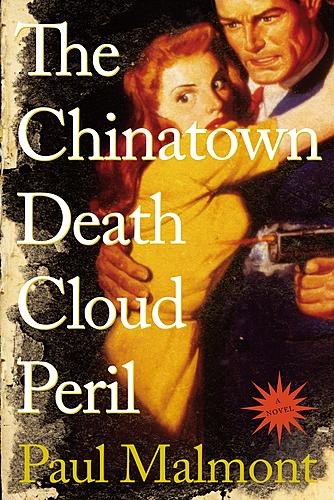
BGH Book Club: "The Chinatown Death Cloud Peril"
The pulp fiction of the early 20th century is the granddaddy of the geek culture of today. Almost every popular trope of genre film, fiction and comics can be traced back to the disreputable magazines with lurid covers that for a brief moment dominated the newsstands of America. Science fiction was born in the pulps. Superheroes mutated from the man of adventure/detective books. Horror movies are still being made based on source material that came from the so-called “shudder” magazines. It might have taken them three quarters of a century to gain some air of respectability, but many of the pulp writers who were dismissed in their time as children’s authors at best and smut peddlers at worst have proved to be as influential as many of their more serious and literary-minded colleagues.
Paul Malmont’s “The Chinatown Death Cloud Peril” takes a few of these authors - “The Shadow” writer Walter Gibson, “Doc Savage” writer Lester Dent and sci-fi writer/future Scientology founder L. Ron Hubbard among others – and places them at the middle of a story that wouldn’t be out of place in one of the books they write at a-penny-a-word. While attending the funeral of their less successful and little loved fellow scribbler H.P. Lovecraft, Gibson and Hubbard hear rumors that his death involved foul play. Meanwhile, Dent and his treasure hunter wife are searching for the ending of an urban legend-like story involving the locked-room murder of a comedian who got caught up in a “tong war” between two Chinese secret societies. The two stories intertwine in a two-fisted cavalcade of poison gas, zombies, the last days of the Chinese empire and a mysterious figure who seems to be Gibson’s character “The Shadow” come to life off the page.
“Peril” is a metafiction novel that owes a major debt to Michael Chabon’s “The Amazing Adventures of Kavelier and Clay”. In fact, Joe Kavelier even shows up briefly in the book, which is filled with cameos both overt (Orson Welles, who originally voiced the Shadow in radio serials) to more subtle (a pair of teenagers working on a funnybook about a caped hero which Hubbard ironically quips “will never fly”) that will keep sharp-eyed readers on their toes. While some knowledge of the era might add to the enjoyment of the in-jokes, “Peril” is both accessible to pulp newbies and does a good job of serving as a fairly accurate history lesson about the genre and the time period.
Though Malmont tries to emulate the pulps in the book’s subject matter, it does spend most of the opening chapters establishing the characters and takes a while to get going. With such a large cast and a story that doesn’t really come together until the halfway point, the book feels a bit incoherent at the beginning as we jump between different, seemingly unrelated stories. When the random chapters detailing the rise of a Chinese warlord enter the narrative out of nowhere, they only slow the main plotlines down with no real payoff other than paying service to the idea of the exotic Orient that was a major thread in the pulps. Asia is much less exotic to modern readers than it was to pulp fans of the 1930s, so instead of reading like exciting tales of far off lands, the subplot feels more like an uninvited history lesson about the Chinese Civil War.
Malmont makes the wise (and pulp-proven) choice of keeping his chapters short so even when the story veers off-course it’s usually only for a few pages. When it gets going, the book cracks along until it reaches an appropriately explosive ending. Pulp stories covered every type of genre and setting imaginable and the story occasionally gets over-stuffed when Malmont tries to pay homage to everything from westerns to science fiction to horror. There are a few supernatural elements that especially feel shoehorned into a book that is ostensibly set in the real world. Psychic powers are alluded to and actual reanimated zombies make an unambiguous appearance but these things are mostly in the background and feel out of place.
Lester Dent was known for his boundless curiosity and would obsessively study a subject, be it plumbing, sailing or world history, and upon mastering the subject he would find some way to work it into his Doc Savage stories, blending real world knowledge into his fictional accounts of adventure. Malmont pulls much the same trick with his book, mixing exhaustively researched accounts of everything from magicians to Asian gangs with his yarns about the pulp heroes behind the pulp heroes. Even though the pulp era was long gone before most of us were born, after reading “Peril” it’s hard not to feel nostalgia for a time that gave birth to much that we still thrill to today.

